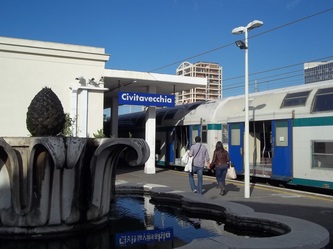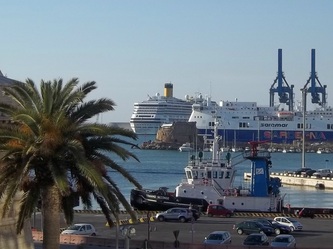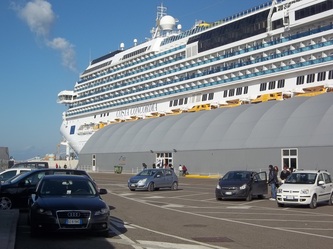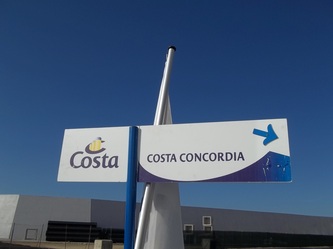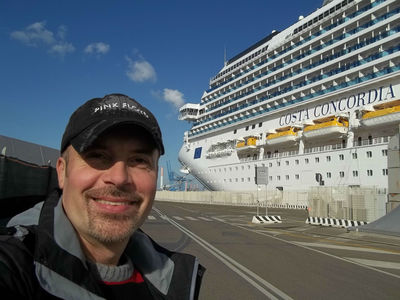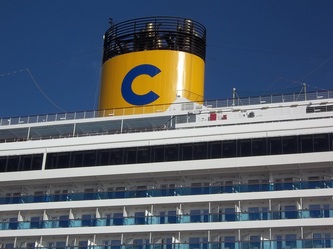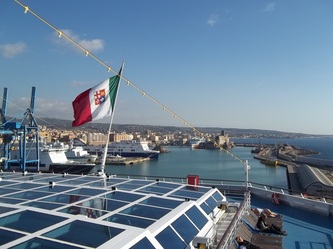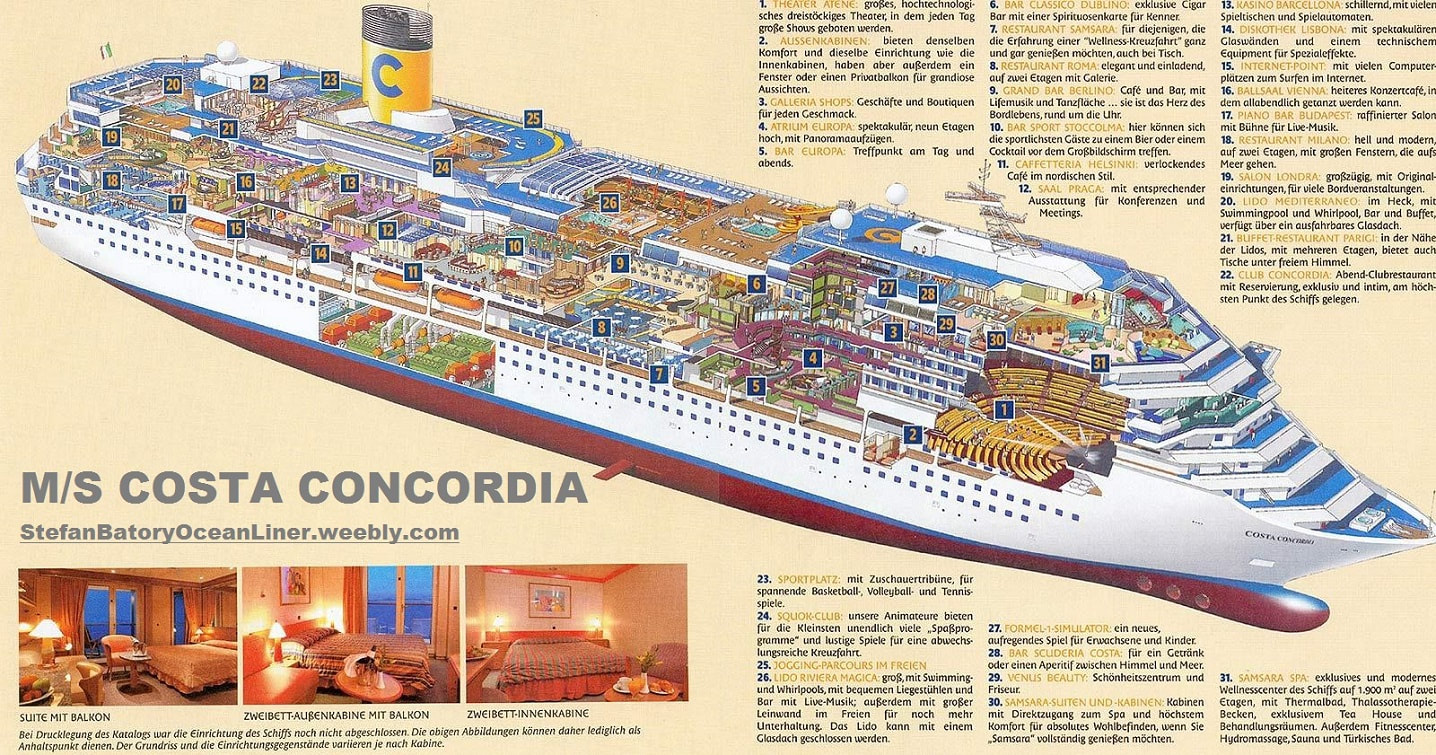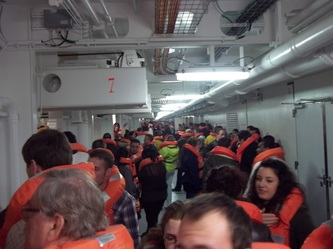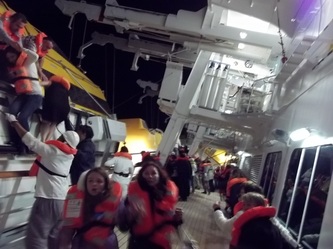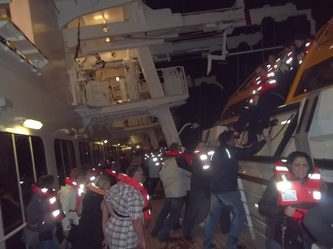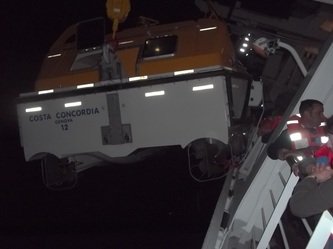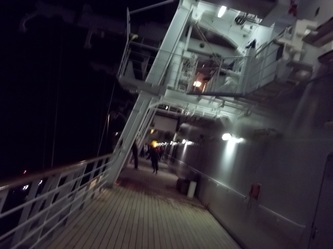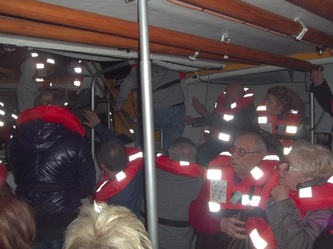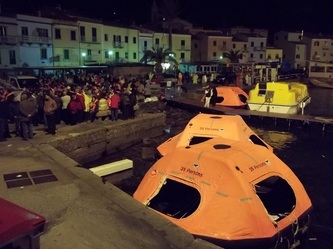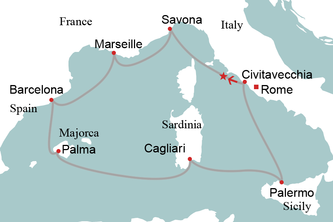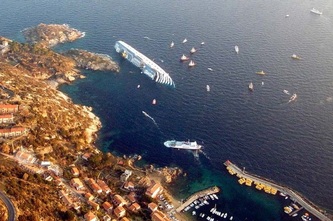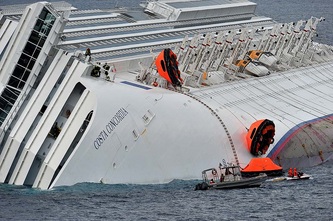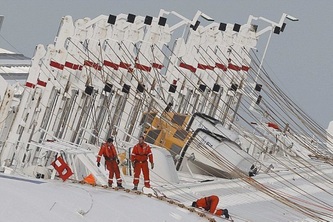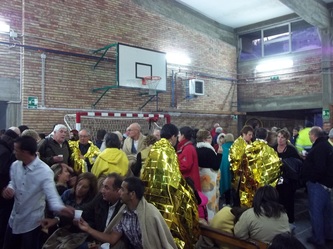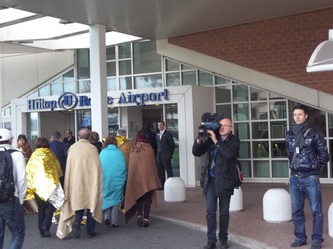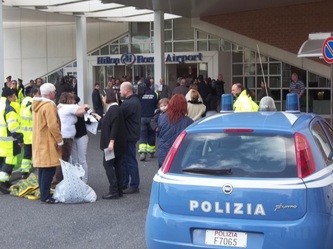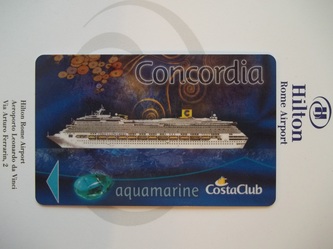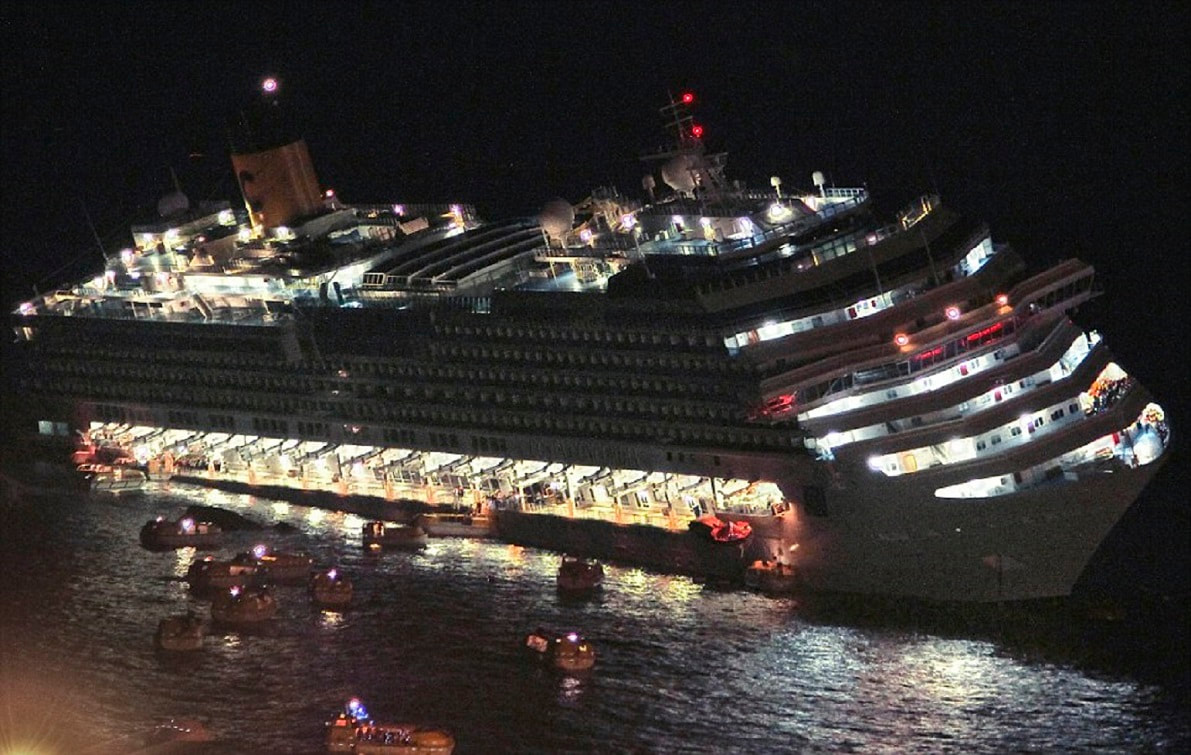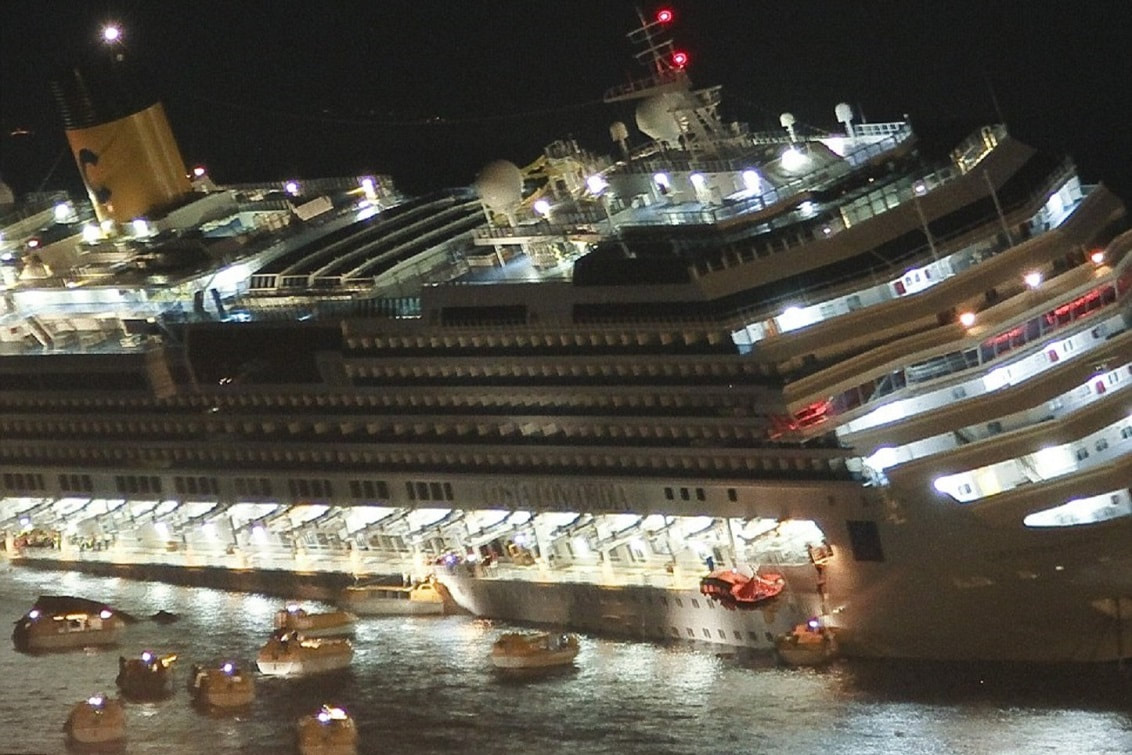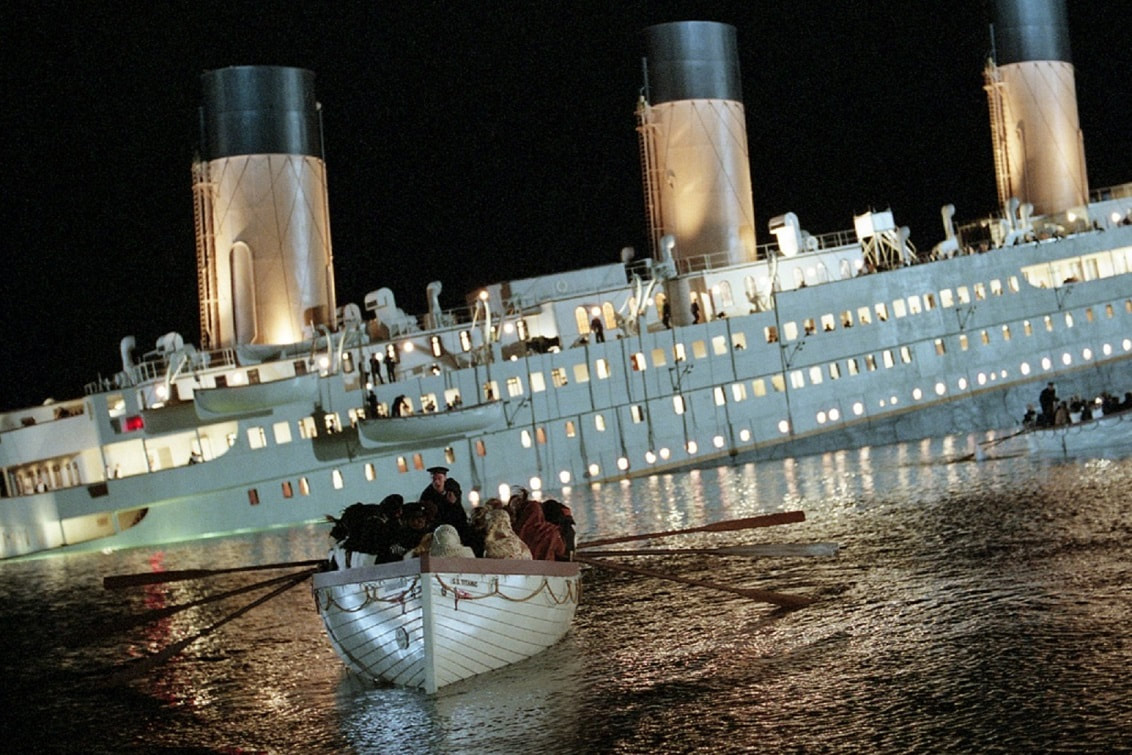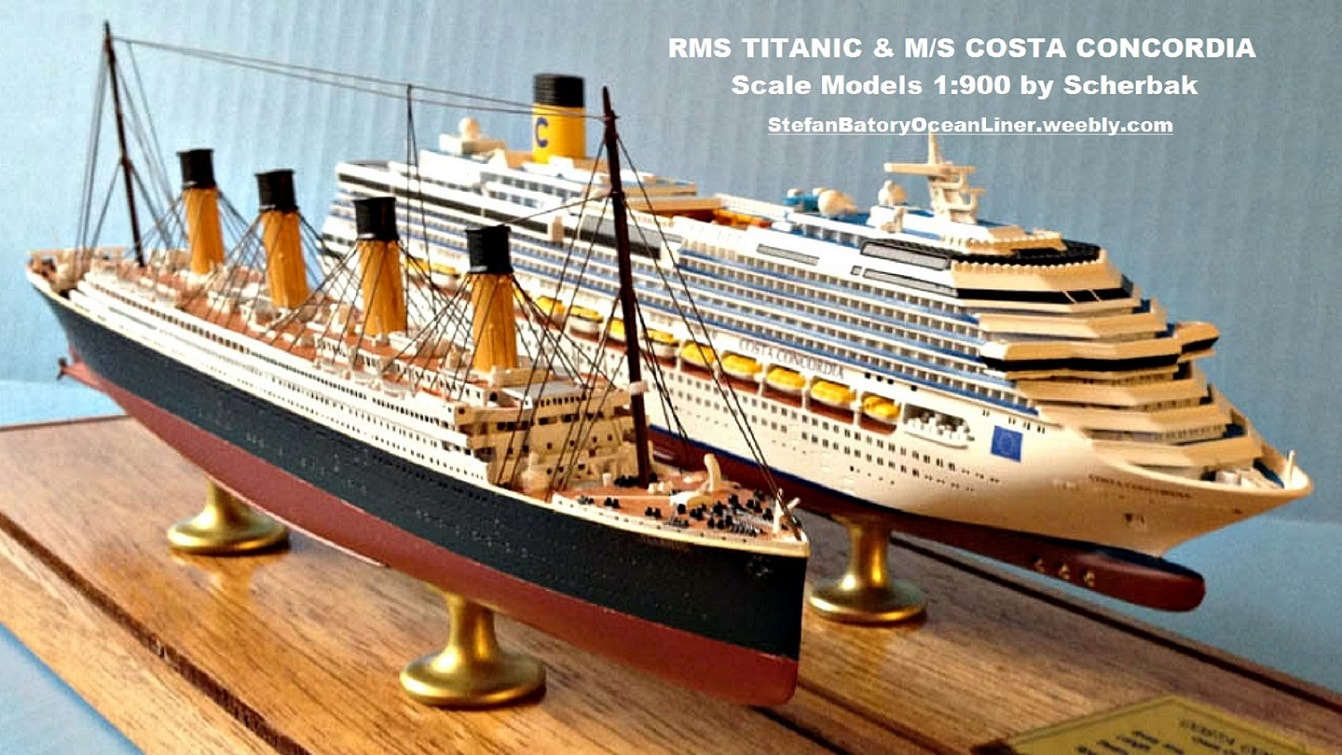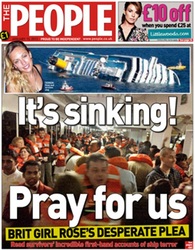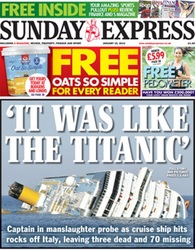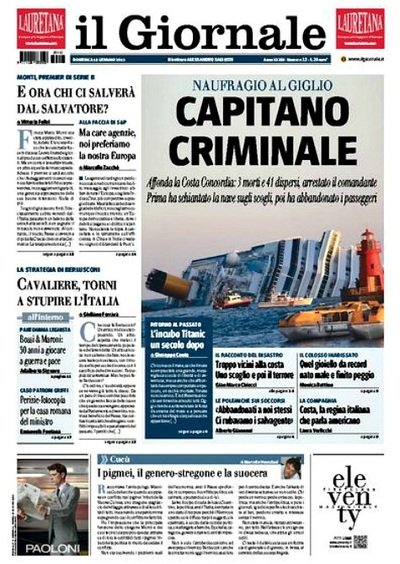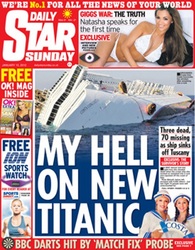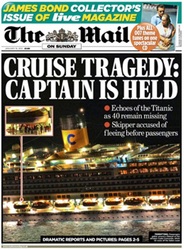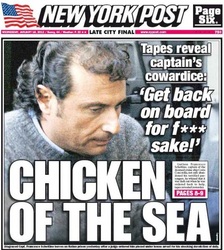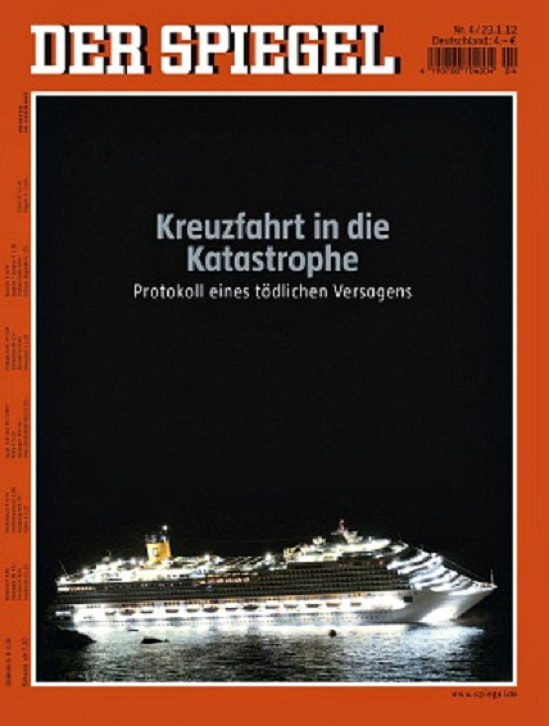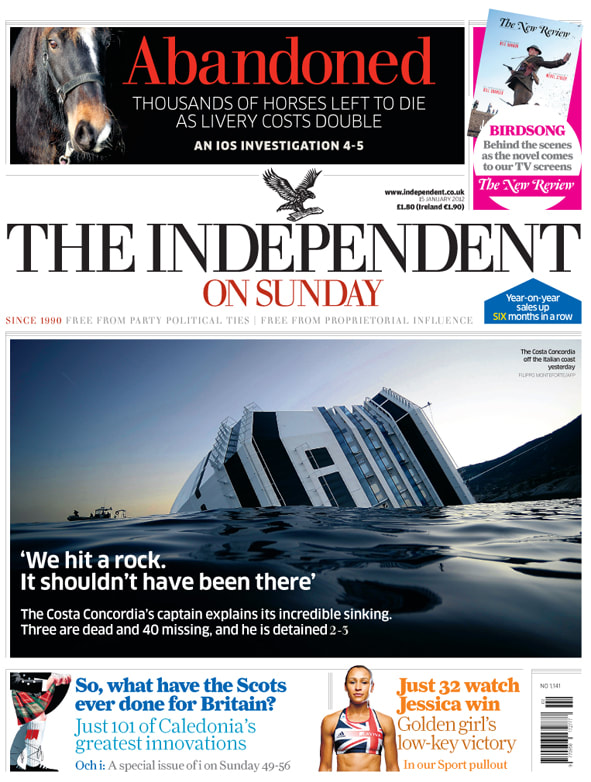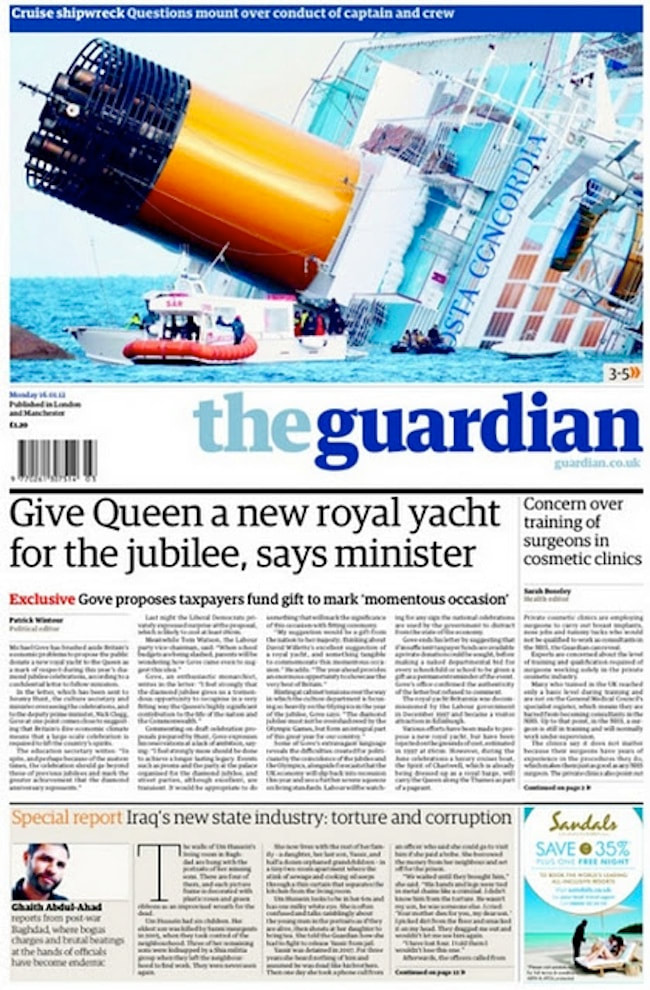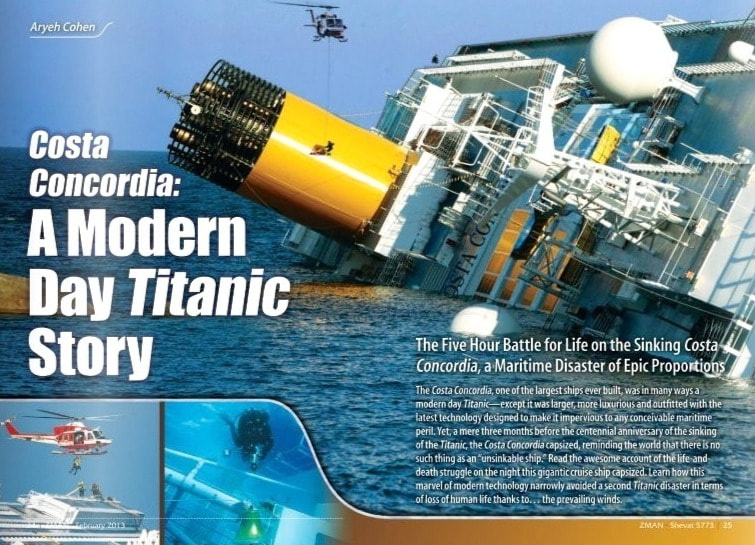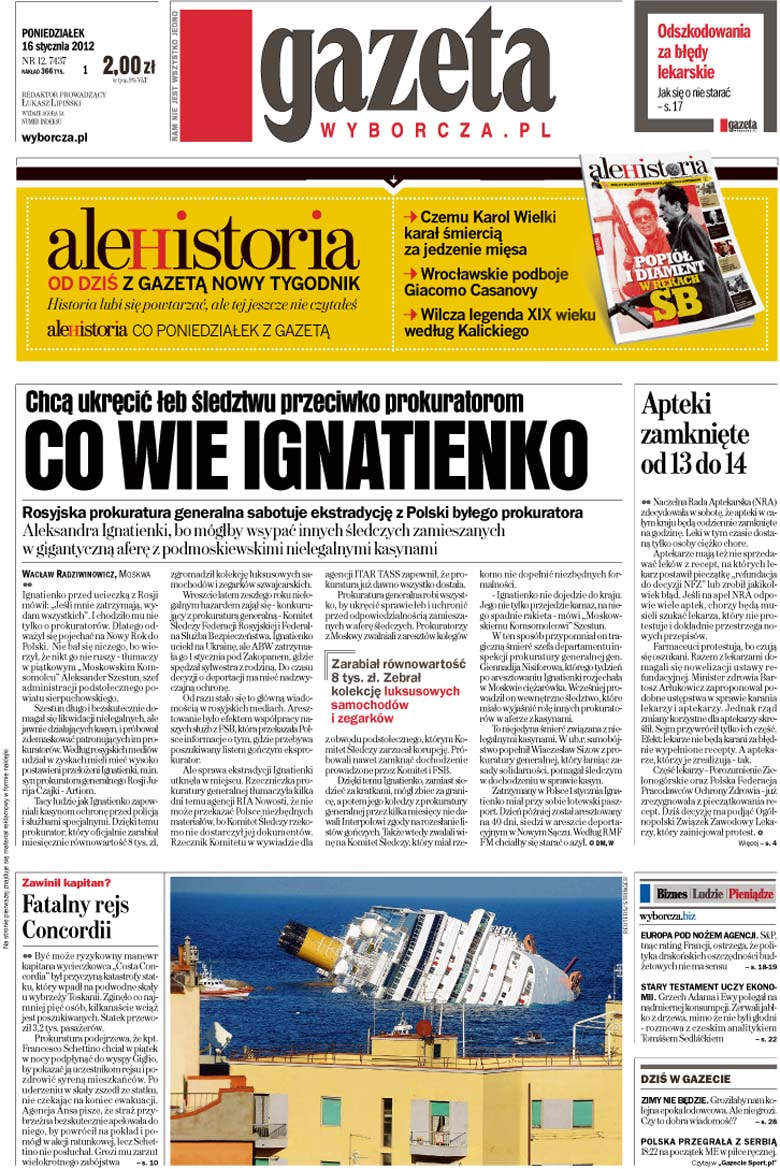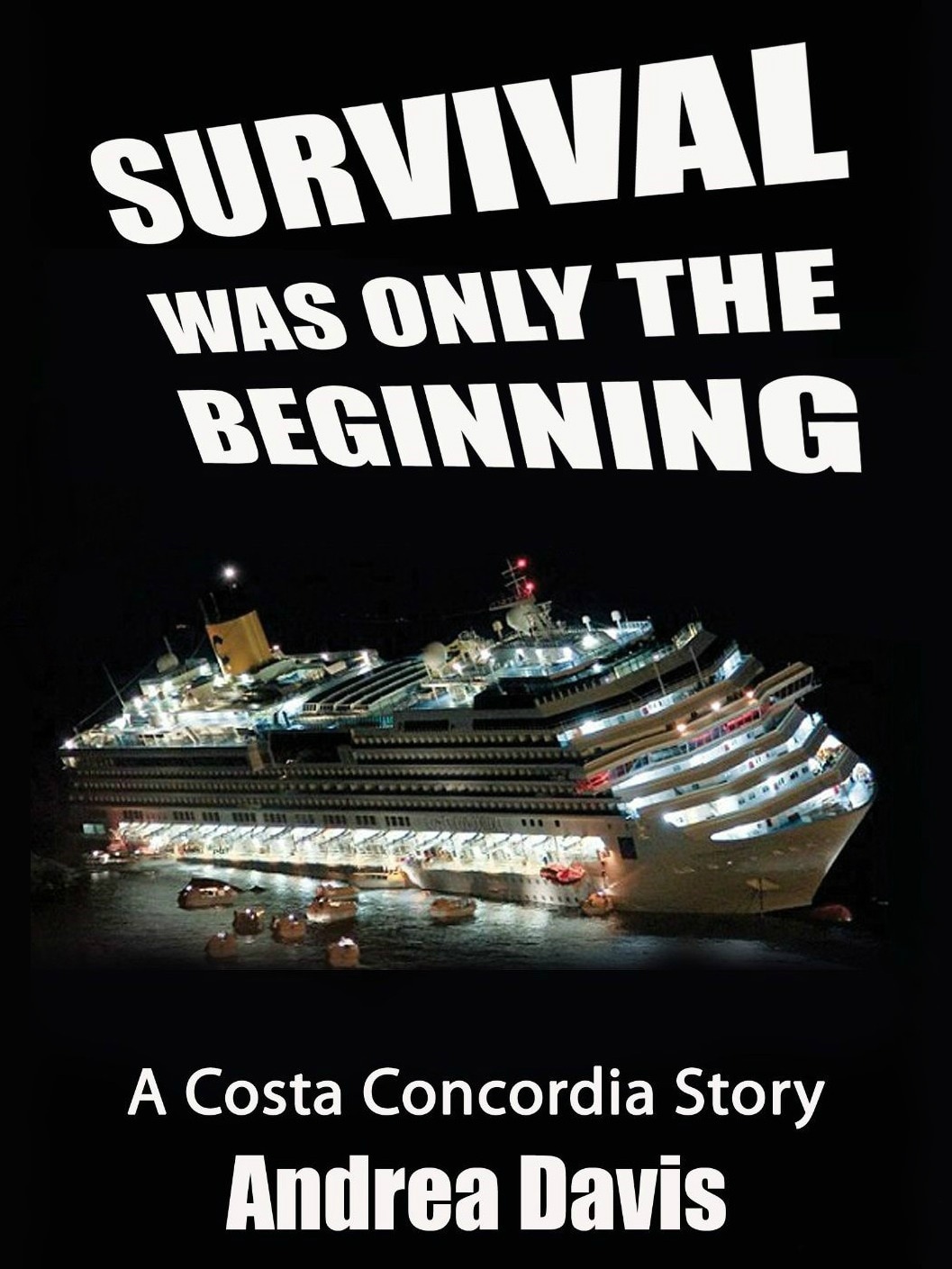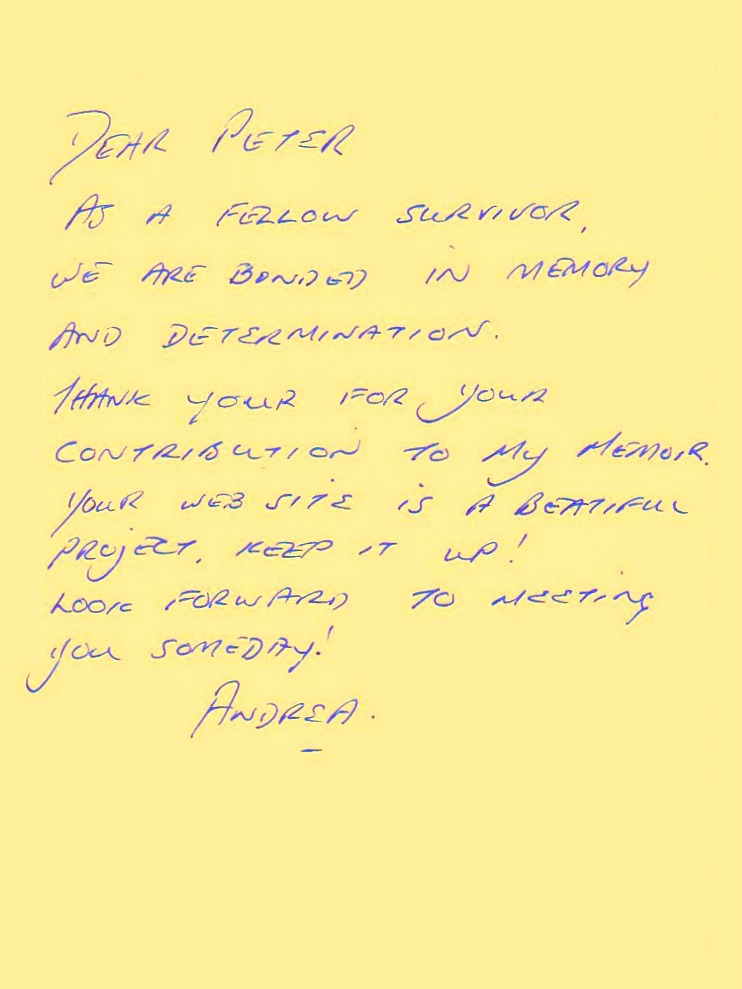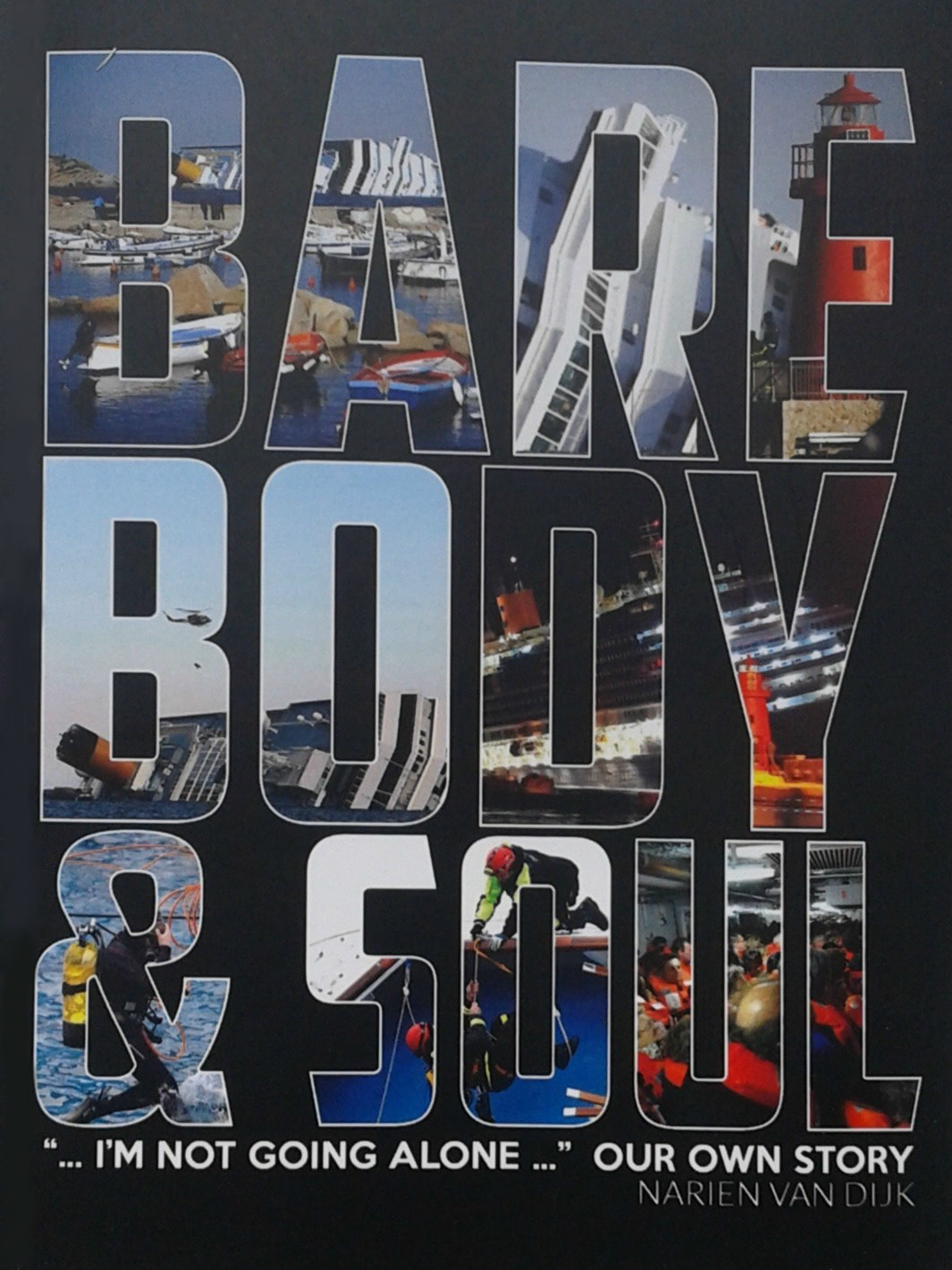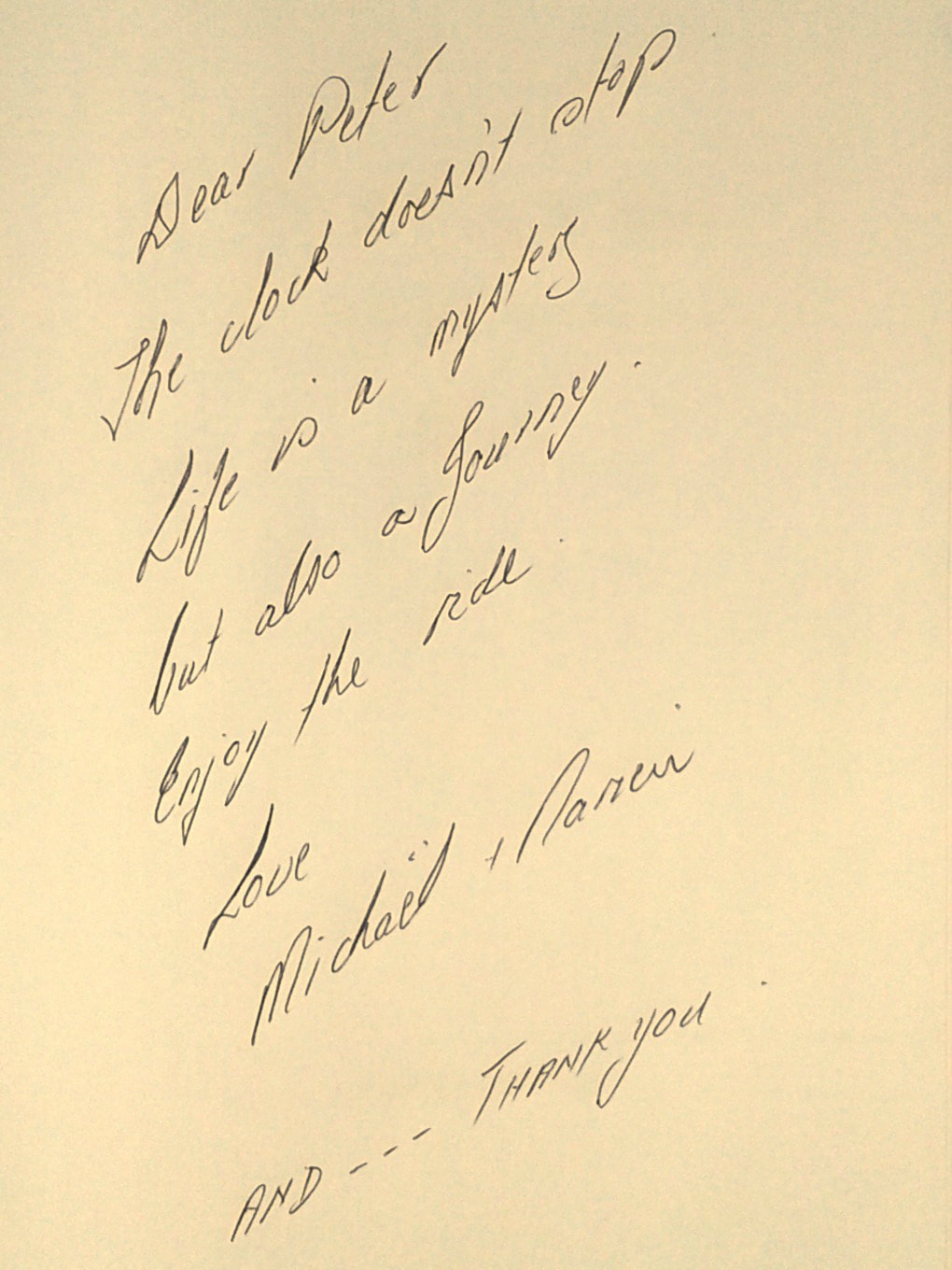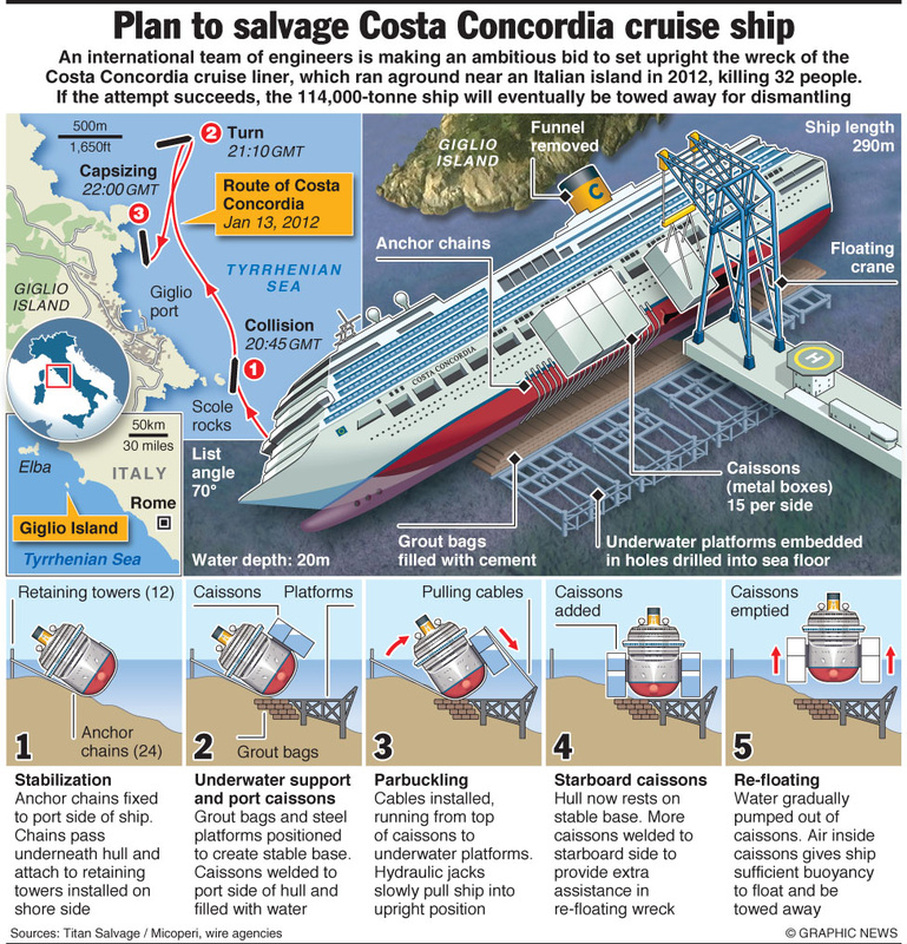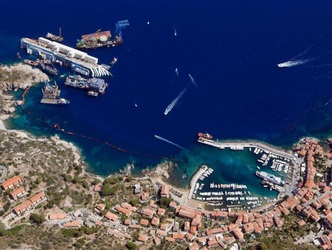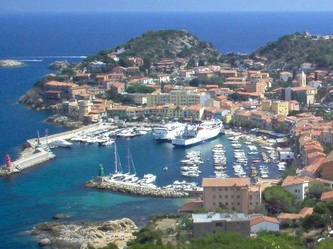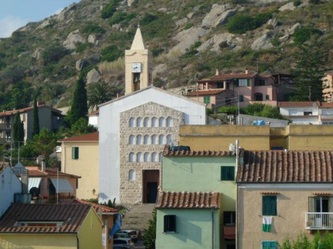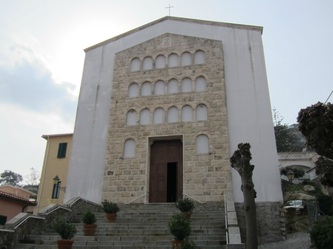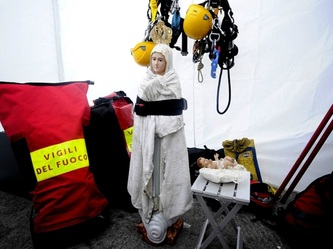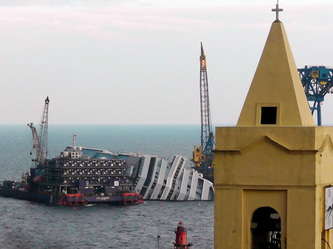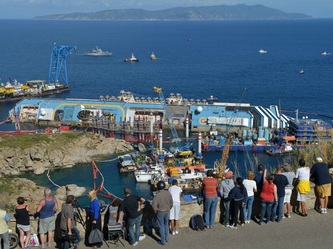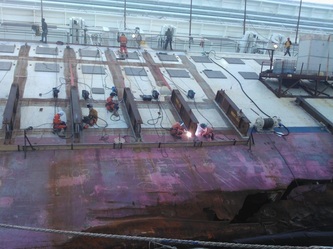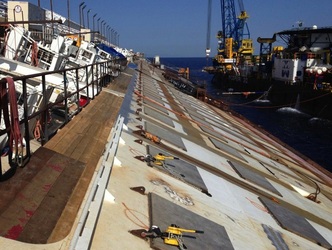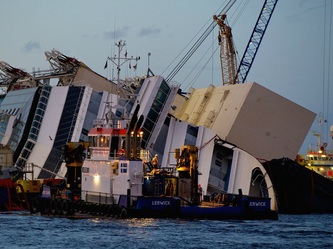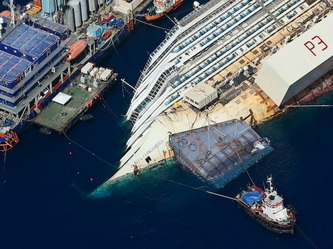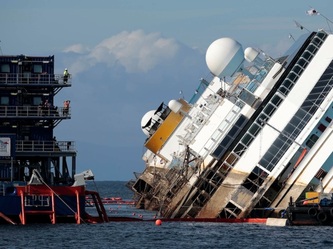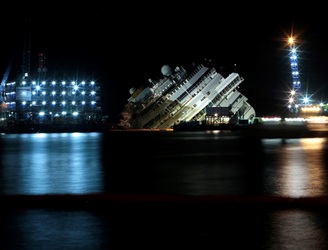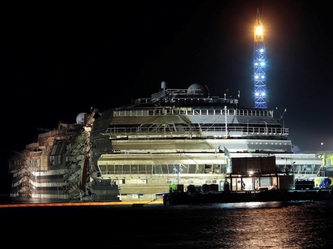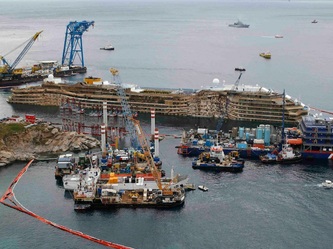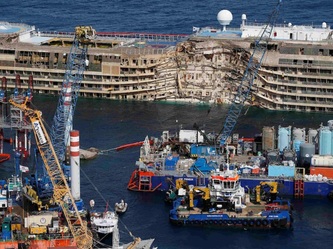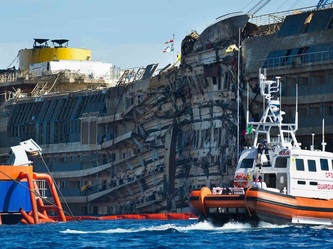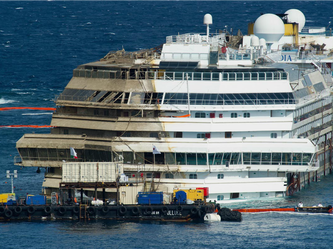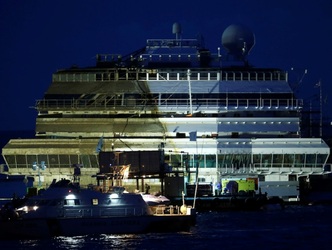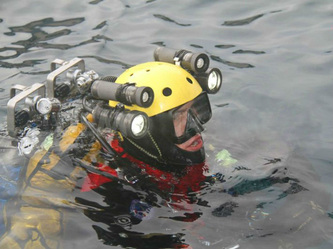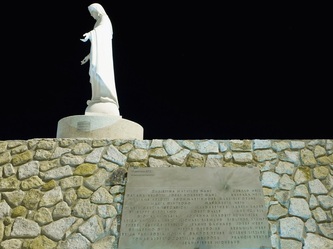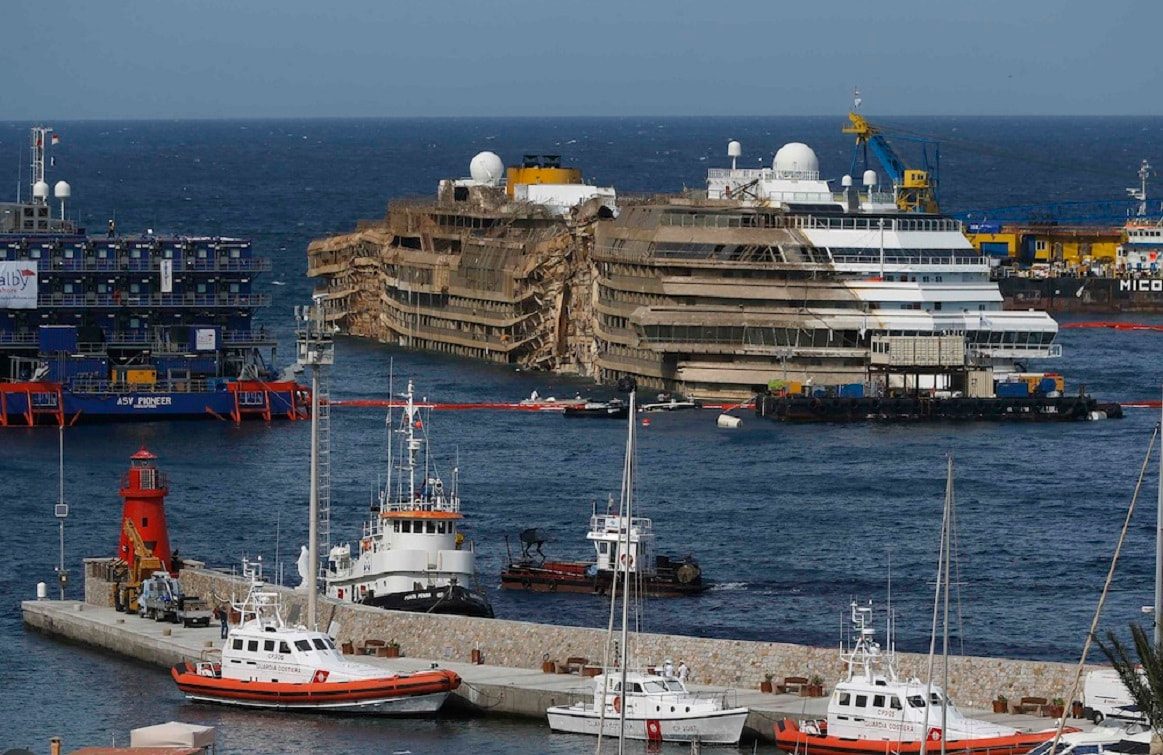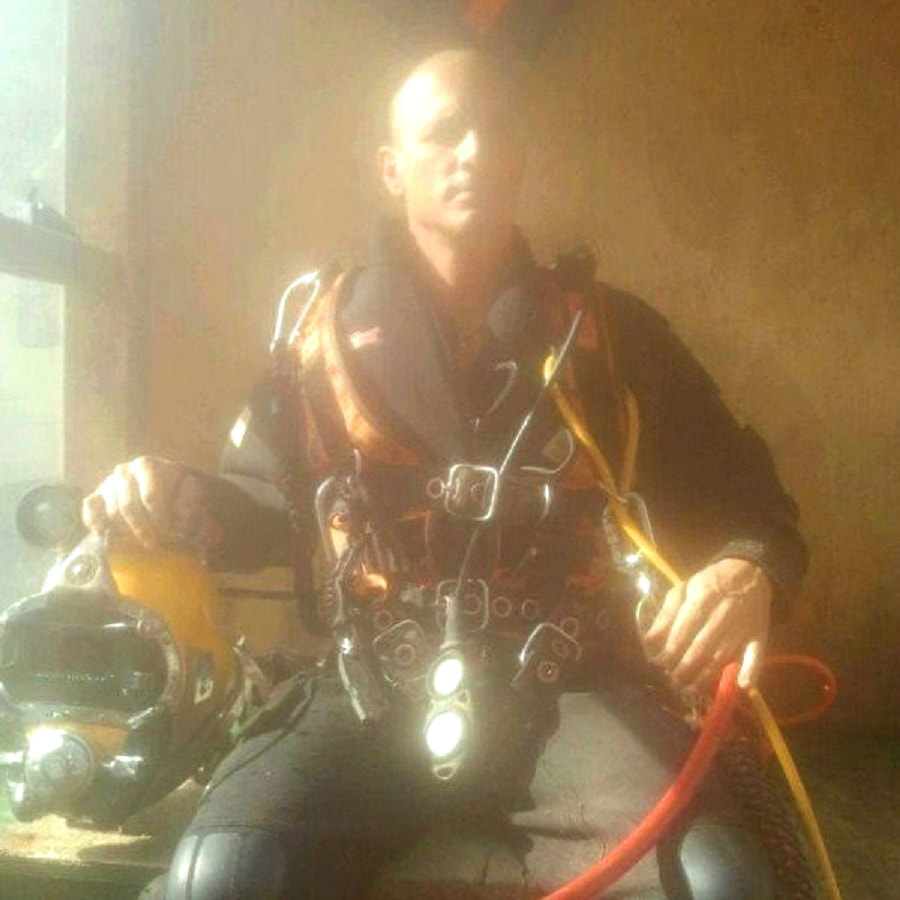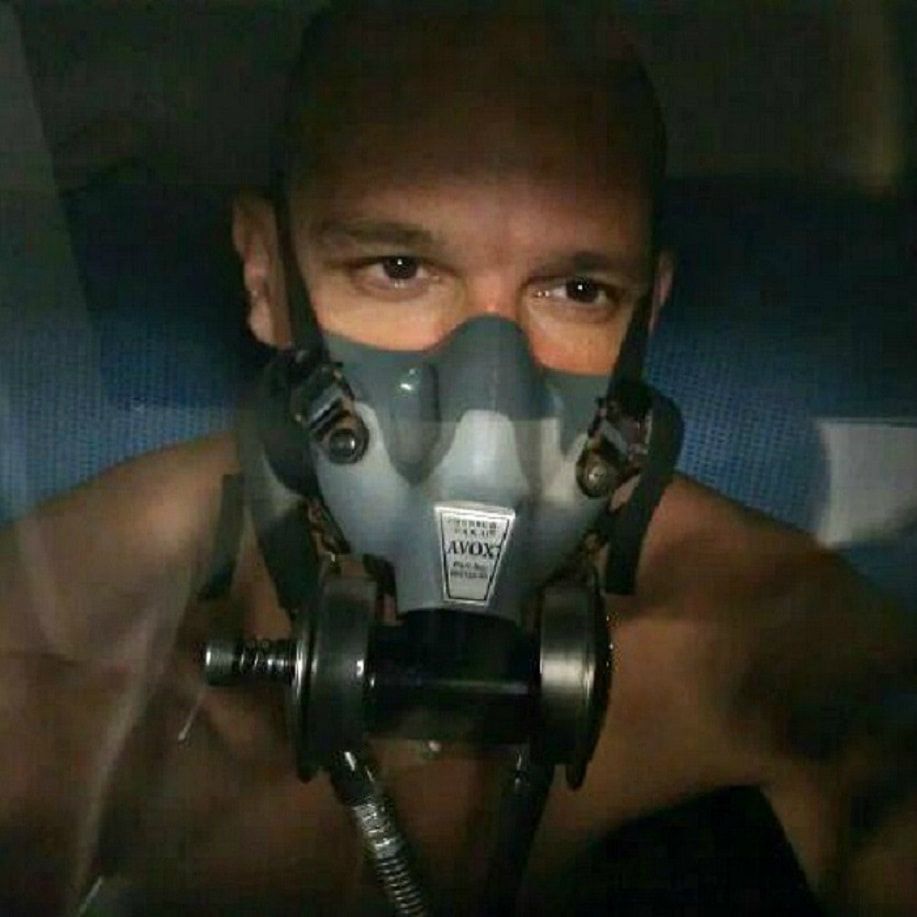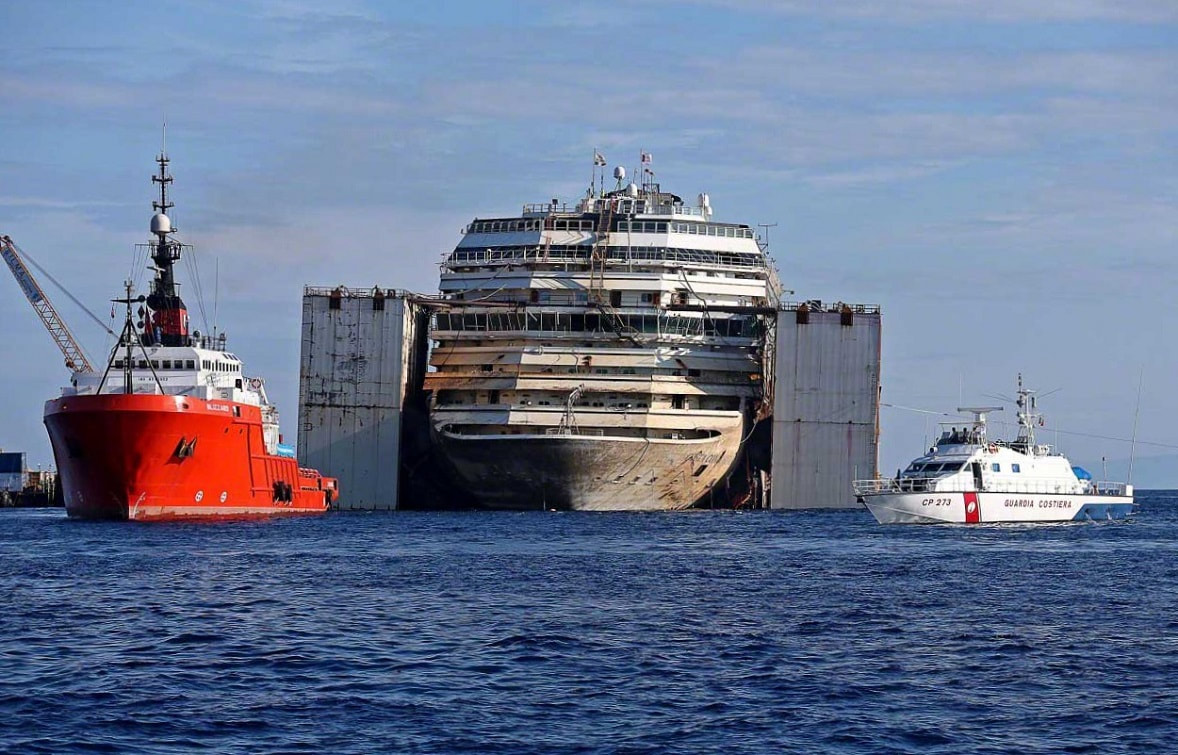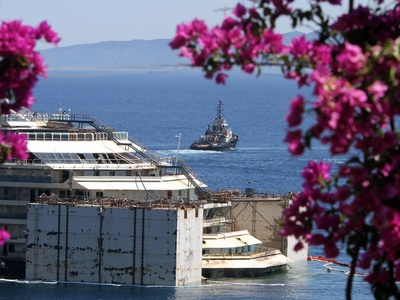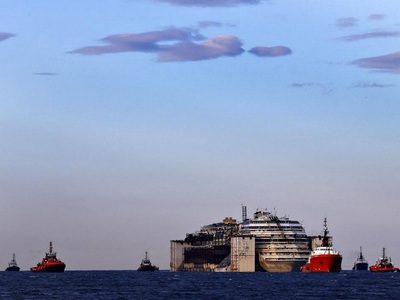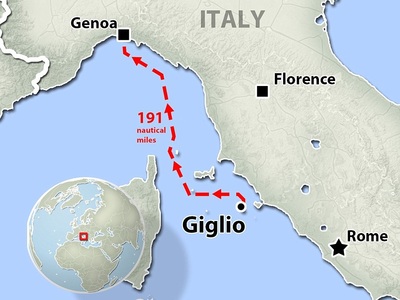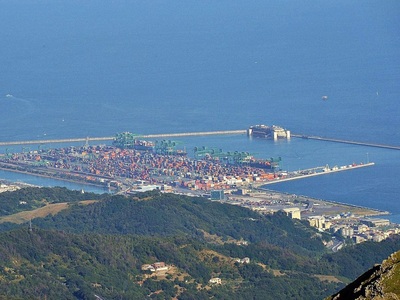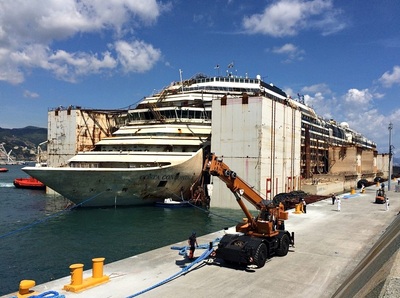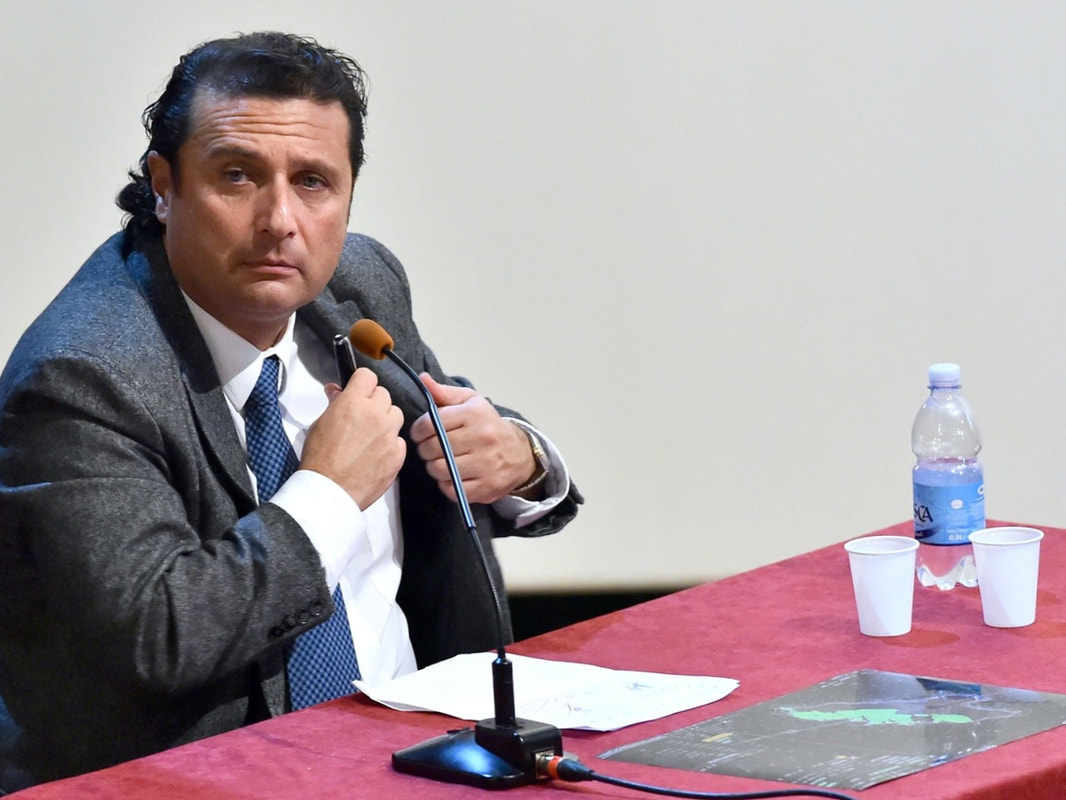The Recollection of Events & Photos by Peter Grajda
Although it was January, the weather was so beautiful; sunny blue sky and around 14 degrees Celsius. I arrived from Rome to Civitavecchia, the embarkation port for M/S COSTA CONCORDIA at noon. The cruise terminal was already filled with passengers happy and excited about their seven days Mediterranean Vacation just about to begin. I was in a great mood too, impatiently waiting to be able to embark the glorious, over 100,000 tons cruise liner and ultimately get into a wonderful maritime adventure. I didn’t know that within a few hours I’ll witness the one of the biggest disaster at the sea...
I traveled on the M/S COSTA CONCORDIA alone. It was the first night on board, Fri Jan 13, 2012... Around 9:15PM, I returned to my cabin after having a lovely dinner with Canadian and South African couples in the main restaurant. My inside cabin number 8247 was located on the eight deck starboard/ right side, forward. I was in a great mood. I liked the ship; it was clean and spacious, the weather was wonderful and the people who I just met at the dining table were great; friendly, funny and very sociable. Everything was perfect… The next morning the ship was supposed to arrive in Savona, Italy. I’ve been told, there is not much to see and do in Savona, so I planned to make a day trip by train to Genoa. That would make the next day quite busy. Therefore, I decided to have a good rest and go to bed early...
A few minutes after I got in bed, around 9:45PM, I heard a dull, scratchy noise, and moments later I started to feel that my bed was listing to the left side of the ship. I've been on a number of cruises and I knew that sometimes the ship moves this way while taking sharp turns or being hit by rough waves, however under normal circumstances the ship gets back to the upright position in the next few moments. This time, she didn't return to the regular position. I turned on the lamp. I saw, "the fruits' plate" was slowly sliding down from the table, fell down to the floor and broke in half. A couple of moments later the light started flickering and ultimately went off. At the same time, I heard announcement through the PA system that there is a problem with an electric generator, but everything is under control, so no need to leave a cabin. It didn't make a sense to me... How come a problem with electricity makes the ship listing? Immediately I jumped out of bed. I opened the cabin door to check out what was going on. The hallway was illuminated by emergency lights only and passengers were questioning each other about the situation. It didn't look good. I started putting on clothes. I grabbed the pouch with my documents, life jacket and I left the cabin going downstairs, towards deck 4 where all "life boats" stations were located.
Within 10 minutes of hearing the "dull scratchy noise", I was on the "life boat deck" forward on the starboard side (front, right side of the ship). There were already lots of passengers standing in the rows, in the front of the life boats. Crew members asked everybody to keep calm and stay away from the life boats/ keep the way clear. We heard another announcement through the speakers, there were problems with an electric generator, yet nothing to be worry about. The ship, for a moment, returned to the correct, upright position, but soon after she started listing again, but towards the opposite, starboard/ right side. As a result, the crew members who were present on deck 4, gave order to all passengers to move to the opposite/left side of the ship...
At this point people started panicking, as it was obvious the ship was unstable and the other side of it must be more appropriate to embark life boats. It started getting really crowded, people push each other, some women cried... No further announcements through the PA speakers. I walked through the crowd while looking around and trying to find out what's going on - about 15 mins later, I ended up in midship-aft section of the 4th deck. It was crowded, people were upset and confused, nobody knew anything. The crew members were standing in the front of the life boats, while waiting for the captain’s order to embark those. But there was no order or any other directions what to do; everybody was waiting while wasting precious time for safe and relatively calm evacuation…
The ship was badly listing towards the starboard/ right side. However, I was still on the port/ left side. It was chaotic. Many passengers started getting angry, yelling and questioning the lack of action. After another 20 minutes of waiting on the listed deck of at least 25-30 degrees, someone among the crew members in charge on the 4th deck, gave the order to get in to lifeboats (the order was not given through the official PA system, though - just loud shout out). Everybody started embarking the lifeboats in quite rush; many panicked... Women, men, children, crew members - everybody was getting into lifeboats together, without any priority. This "life boats' embarkation" started around one hour after I left my cabin. I lost my watch, couldn't keep an eye on exact time, but I think it was around 11:00PM. The delay about starting the evacuation was upsetting...
Ultimately, I got into lifeboat number 12 on the port/ left side of the ship. The people around became quite emotionally, shaky, crying and upset - many without proper warm clothes as they came directly from the restaurant or theatre. The lifeboat was absolutely full, above it's capacity of 150 passengers. Passengers started to yell, the lifeboat might fall down because it's getting too heavy. Everybody was so scared and so worried, but more people were still jumping into the live boat over the railing and entrance hatch. Some of them couldn't keep balance; flipped over the railing and hit their heads, arms or shoulders with the bottom of the lifeboat. An elderly woman started badly bleeding from her injured head - someone passed her a cloth-napkin from the restaurant to apply to the wound. It was hard to watch, quite traumatic.
It needs to be said that at least 20% of us in the lifeboat were crew members. I saw that many of them were very frightened especially a couple of young girls (waitresses?) who were crying and trembling. I was sorry for them, but at the same time I was wondering how come so many crew members were already in the life boat with us, while regular passengers were still running along the deck and looking for free space in the lifeboats… There was a woman, I guess the ship's caregiver-counsellor with three crying kids, who kept running the deck and shouting names of those kids in frantic attempt to find their parents. It was horrifying to watch that scene.
My life boat was managed by three crew members. One of them was at the bow of the boat, the other one at the aft and the third one was at the entrance hatch. All of them were very young and had obvious difficulties to manage the extreme emergency situation; especially the operation of lowering the boat from the davit arms was problematic from the beginning. At one point, I noticed that most of the other life boats, that I could see through the small windows were already lowered, released from the cables and floating on the water, but our life boat and the two other near to us were still at the first-embarking position on deck 4. People in the lifeboat started to scream "go down, go down!", but as I mentioned earlier everything was delayed because additional passengers were still getting in or rather jumping in to the lifeboat. The crew had difficulties to start the lowering procedure... It seemed like something was hindering the process. People spoke and yelled in Italian, French, German... it was crazy; difficult to communicate and hear any directions.
When finally it was decided to lower the boat, the davit arms' cables started to move very slowly. I thought: "yeah, it's no good". At the same moment after going down, maybe only 3-4 feet, the fiberglass' shell of the lifeboat hit the side of the ship. We heard a loud cracking noise. For a moment, I thought the life boat got broken/ cracked from the collision with the side of the ship. But seconds after, all of us inside, realized that we just stuck, only stuck!!!
At that time, the ship's listing was already so significant, the remaining lifeboats became blocked from being lowered. My lifeboat, and the other two near by (I think, it was #6 an #16) got stuck between deck 4 and 3 like an elevator between two floors. The lifeboats' operating crew yelled for help and directions what to do: "First Officer, First Officer!!!" But, there was no anyone to respond. The decision was made among us inside the lifeboat: "We need to leave!". There was no other option. Everybody had to jump out from the life boat back to the ship, back to the 3rd deck below us. It was terrible. People had to jump from the stuck lifeboat to the badly tilted deck from the height of 6-7 feet - many of them couldn't keep a balance and fell down while hitting the opposite wall with their heads, shoulders, legs...There wasn’t any other lifeboat available to get in. All, except the three stuck life boats were already down on the water. Together with some other guy, I think he was French I started looking around for the "inflatable rafts" that are usually stored inside the white barrel-kind of containers. However, nothing of this kind was available on deck 3. The situation didn’t look good. To be honest, I got quite frightened at this point, and I was pretty sure I may have to jump into the water. I picked up an extra life jacked from the storage case. My heart was pounding and my mouth was so dry like never before!
Then, suddenly I saw some people running across the dark interior of the ship, from our - the "port side" of the ship towards the opposite "starboard side" that was near the water level. I decided to follow them. The railing of the 3rd deck was around 6 feet above the water level at that time. Then in the darkness, around the midship, I noticed two life boats, which were floating at the side of Concordia' hull. Those boats came back to the ship after dropping off ashore the first load of survivors. I and couple of other passengers jumped on the roofs of those boats and then got inside it through the partial roof opening. Unfortunately, there were not many passengers around to follow us and use those boats. There was total chaos and lack of coordination. Lots of people were still on the opposite - port side of the ship. However, those two lifeboats couldn’t wait and must to move away quickly because, the ship was listing more and more with every minute and might possibly pull down and submerge those life boats floating beside her...
Within the next 15 minutes I got ashore. It was around 11:30PM. I was so happy and felt incredibly lucky to be alive. A moment later, I bumped into an Italian young couple. The guy was sobbing loudly while talking on his cell. I asked his girlfriend what's going on? She said, the guy is on the phone with his parents, who are still on the ship - on the ship that was sinking right before our eyes. Shivers went down through my spine…
Within the next 15 minutes I got ashore. It was around 11:30PM. I was so happy and felt incredibly lucky to be alive. A moment later, I bumped into an Italian young couple. The guy was sobbing loudly while talking on his cell. I asked his girlfriend what's going on? She said, the guy is on the phone with his parents, who are still on the ship - on the ship that was sinking right before our eyes. Shivers went down through my spine…
M/S COSTA CONCORDIA, built in 2006, 115,000 tonne - the vessel is deadly wounded with a 50 meter long gash on her portside after colliding with a rock, is going down at Giglio Island, Italy - Fri. Jan. 13, 2012 - Photo: Associate Press
The M/S COSTA CONCORDIA was carrying 3,229 passengers and 1023 crew members. Everybody needed to abandon the ship. The evacuation was branded "a catastrophe within a catastrophe" by many survivors. An incompetence, unawareness and irresponsibility were visible everywhere during the rescue operation. The accident's death toll has reached 32 people. The M/S COSTA CONCORDIA sank almost exactly on the 100th anniversary of the sinking of the RMS TITANIC on April 12th, 1912. The spooky Titanic link emerged even more vividly as it was revealed that the Italian granddaughter of a Titanic survivor, 30 year old Valentina Capuano, was on board the ill-fated Concordia.
The media also brought a news about the champagne bottle that like in the Titanic case failed to break during the Concordia’s christening ceremony which many consider as particularly bad omen. Ironically, Titanic was owned by White Star Line that merged in 1934 with Cunard that became part of Carnival Corp, Concordia's owner, in 1999. That makes the Titanic and the Concordia distant corporate cousins.
The M/S COSTA CONCORDIA was carrying 3,229 passengers and 1023 crew members. Everybody needed to abandon the ship. The evacuation was branded "a catastrophe within a catastrophe" by many survivors. An incompetence, unawareness and irresponsibility were visible everywhere during the rescue operation. The accident's death toll has reached 32 people. The M/S COSTA CONCORDIA sank almost exactly on the 100th anniversary of the sinking of the RMS TITANIC on April 12th, 1912. The spooky Titanic link emerged even more vividly as it was revealed that the Italian granddaughter of a Titanic survivor, 30 year old Valentina Capuano, was on board the ill-fated Concordia.
The media also brought a news about the champagne bottle that like in the Titanic case failed to break during the Concordia’s christening ceremony which many consider as particularly bad omen. Ironically, Titanic was owned by White Star Line that merged in 1934 with Cunard that became part of Carnival Corp, Concordia's owner, in 1999. That makes the Titanic and the Concordia distant corporate cousins.
M/S COSTA CONCORDIA & RMS TITANIC - Photos from when CONCORDIA went down are definitely reminiscent of
the 1912 sinking of TITANIC recreated by the 1997 James Cameron film
the 1912 sinking of TITANIC recreated by the 1997 James Cameron film
M/S COSTA CONCORDIA & RMS TITANIC - Two extraordinary similar tragedies exactly 100 years apart, 1912-2012
Scale Models 1:900 by Scherbak
Scale Models 1:900 by Scherbak
DOCUMENTARY FILMS
"The Sinking of The Concordia: Cought on Camera" - Feb. 2012
A dron's aerial view of the Shipwreck by Matt Hardigree - Giglio Island, May 2013
THE BOOKS
Two books written by survivor passengers - friends...
M/S COSTA CONCORDIA lifted after groundbreaking 19 hr salvage operation - Sep. 16, 2013
On Monday, Sept 16, 2013 the 500-person salvage crew from 26 countries freed the stricken Costa Concordia from rocks after 18 months of unprecedented engineering preparation and planning. All the superlatives apply to this marine salvage operation off the Italian island of Giglio: largest, most expensive, most complicated. And first of its kind!
The job, known as “Parbuckling” is a standard operation to right capsized ships, but its never been done before on such a scale. In Concordia case the "Parbuckling" involved a complicated system of 56 enormous cables, 58 pulling machines, 11 multi-storey flotation tanks, six undersea platforms, 30,000 tons of steel and 1180 bags of cement. It was an anxiously awaited 19-hour operation that has never been attempted before on such a huge liner. This complicated rotation and lifting of the Concordia was full time/ one shot job and it couldn't afford to be stop for anything. If something would go awry, there was no option to start over or change gears...
The crippled vessel wouldn’t budge for some three hours after the operation to right it began, but after 6,000 tons of force were applied the first signs of detachment were noticed through the underwater cameras. The first stage was particularly difficult task because the hull wrapped itself around the shoal upon which it rested... Then the winches pulled the ship until the flotation tanks, called sponsons, reach sea level and were filled with water. The water and gravity helped push the 115,000 ton, 1000 feet long liner down to the underwater artificial platform built to support it. The wreckage will sit on that platform till the final lift and tow to the ship-breaker in Summer 2014.
Three days after the Concordia was freed from rocks, divers spotted human remains that were the last two bodies missing among the shipwreck’s 32 casualties of the crash of Jan. 13, 2012.
The cost of the salvage operation reach $800 million, exceeding the $500 million price tag of the ship itself. The Germany's Allianz financial company, which insured about 5 per cent of the ship’s hull, has estimated the total loss including ship, salvage, environmental damage and third-party claims at $1.7 billion.
The job, known as “Parbuckling” is a standard operation to right capsized ships, but its never been done before on such a scale. In Concordia case the "Parbuckling" involved a complicated system of 56 enormous cables, 58 pulling machines, 11 multi-storey flotation tanks, six undersea platforms, 30,000 tons of steel and 1180 bags of cement. It was an anxiously awaited 19-hour operation that has never been attempted before on such a huge liner. This complicated rotation and lifting of the Concordia was full time/ one shot job and it couldn't afford to be stop for anything. If something would go awry, there was no option to start over or change gears...
The crippled vessel wouldn’t budge for some three hours after the operation to right it began, but after 6,000 tons of force were applied the first signs of detachment were noticed through the underwater cameras. The first stage was particularly difficult task because the hull wrapped itself around the shoal upon which it rested... Then the winches pulled the ship until the flotation tanks, called sponsons, reach sea level and were filled with water. The water and gravity helped push the 115,000 ton, 1000 feet long liner down to the underwater artificial platform built to support it. The wreckage will sit on that platform till the final lift and tow to the ship-breaker in Summer 2014.
Three days after the Concordia was freed from rocks, divers spotted human remains that were the last two bodies missing among the shipwreck’s 32 casualties of the crash of Jan. 13, 2012.
The cost of the salvage operation reach $800 million, exceeding the $500 million price tag of the ship itself. The Germany's Allianz financial company, which insured about 5 per cent of the ship’s hull, has estimated the total loss including ship, salvage, environmental damage and third-party claims at $1.7 billion.
PHOTOS
From the beginning to the end of Concordia Disaster...
The wreckage of the M/S COSTA CONCORDIA cruise ship sits near the harbor of Giglio Island, Italy, on Tuesday, September 17, 2013 just a few hours after a salvage crew rolled the ship off its side in unprecedented salvage operation.
M/S COSTA CONCORDIA claims another life - Feb. 1, 2014... two years after her capsizing
A salvage diver has died while working on the Costa Concordia wreck after he got a fatal cut from metal sheeting 10ft underwater and bled to death. The Spanish diver from La Coruna, Israel Franco Moreno, 41 was a professional underwater welder with the Titan Salvage Company, who had travelled the world on ship salvage operations.
On Sat, Feb 1, 2014 around 4:30PM, Moreno was working in a team of divers in the area of the ship between deck four and deck five, according to the salvage officials. The divers were cutting off braces that protrude from the ship, and which served to extend the emergency lifeboats, in order to build a flat steel surface on the side of the 950 ft long Concordia. The steel surface was to be used to attach additional "sponsons" - large tanks to refloat and tow away the wreck.
Apparently, the one of the metal braces being cut off reportedly fell onto Moreno, crushing his chest and causing a deep laceration in the groin area. For safety purposes, divers always stay in pairs. His "standby" diver came immediately to his aid and helped bring him to the diving platform at the surface, where he was still conscious. On-site paramedics attempted first aid. But it took nearly an hour for additional doctors and nurses to arrive by helicopter from mainland Italy, while Moreno was heavily bleeding. He died around 5.30PM.
The Italian Grosseto's District prosecutor's office has opened a murder inquiry and ordered that the portion of the ship be sealed off - creating a crime scene within a crime scene, since the entire ship is being investigated as the related trials continue.
(Source: The Telegraph, UK )
On Sat, Feb 1, 2014 around 4:30PM, Moreno was working in a team of divers in the area of the ship between deck four and deck five, according to the salvage officials. The divers were cutting off braces that protrude from the ship, and which served to extend the emergency lifeboats, in order to build a flat steel surface on the side of the 950 ft long Concordia. The steel surface was to be used to attach additional "sponsons" - large tanks to refloat and tow away the wreck.
Apparently, the one of the metal braces being cut off reportedly fell onto Moreno, crushing his chest and causing a deep laceration in the groin area. For safety purposes, divers always stay in pairs. His "standby" diver came immediately to his aid and helped bring him to the diving platform at the surface, where he was still conscious. On-site paramedics attempted first aid. But it took nearly an hour for additional doctors and nurses to arrive by helicopter from mainland Italy, while Moreno was heavily bleeding. He died around 5.30PM.
The Italian Grosseto's District prosecutor's office has opened a murder inquiry and ordered that the portion of the ship be sealed off - creating a crime scene within a crime scene, since the entire ship is being investigated as the related trials continue.
(Source: The Telegraph, UK )
M/S COSTA CONCORDIA'S FINAL JOURNEY - July 23-27, 2014
The wreck of the Costa Concordia is towed by a tugboat as it leaves Giglio Island for Genoa
where the ship will be broken up for scrap, July 23, 2014
where the ship will be broken up for scrap, July 23, 2014
The wrecked Costa Concordia limped into its last port on Sunday, July 27, 2014, when it was towed to the northern Italian city of Genoa to be broken up for scrap, two-and-a-half years after running aground and sinking with the loss of 32 lives.
After a four-day journey (July 23-27, 2014) from the Tuscan island of Giglio, where it sank on Jan. 13, 2012, the 114,500-tonne hulk was maneuvered into place and secured at the conclusion of one of the largest and most complex maritime salvages ever attempted.
Prime Minister Matteo Renzi flew to Genoa to hail the completion of the operation which restored some pride to Italy after a disaster that was widely interpreted as a national humiliation as well as a human tragedy.
After hours of preparation, dockworkers fixed the wreck in place in the industrial port of Voltri, just outside the main harbor in Genoa. It will be dismantled in an operation expected to cost 100 million euros and take up to two years.The overall salvage effort is expected to cost the owner/ operator of the ship, the Carnival Corp/ Costa Cruises and its insurers more than 1.5 billion euros ($2.14 billion).
After a four-day journey (July 23-27, 2014) from the Tuscan island of Giglio, where it sank on Jan. 13, 2012, the 114,500-tonne hulk was maneuvered into place and secured at the conclusion of one of the largest and most complex maritime salvages ever attempted.
Prime Minister Matteo Renzi flew to Genoa to hail the completion of the operation which restored some pride to Italy after a disaster that was widely interpreted as a national humiliation as well as a human tragedy.
After hours of preparation, dockworkers fixed the wreck in place in the industrial port of Voltri, just outside the main harbor in Genoa. It will be dismantled in an operation expected to cost 100 million euros and take up to two years.The overall salvage effort is expected to cost the owner/ operator of the ship, the Carnival Corp/ Costa Cruises and its insurers more than 1.5 billion euros ($2.14 billion).
Cpt. Francesco Schettino – “Captain Coward” sentenced to 16 years in jail on manslaughter and other charges – Grosetto Italy, Wednesday Feb. 11, 2015
The 54 year-old Francesco Schettino was given ten years for manslaughter, five for causing a shipwreck, one for abandoning ship, and a further month for giving false information to port authorities - in total, 16 years in jail...

